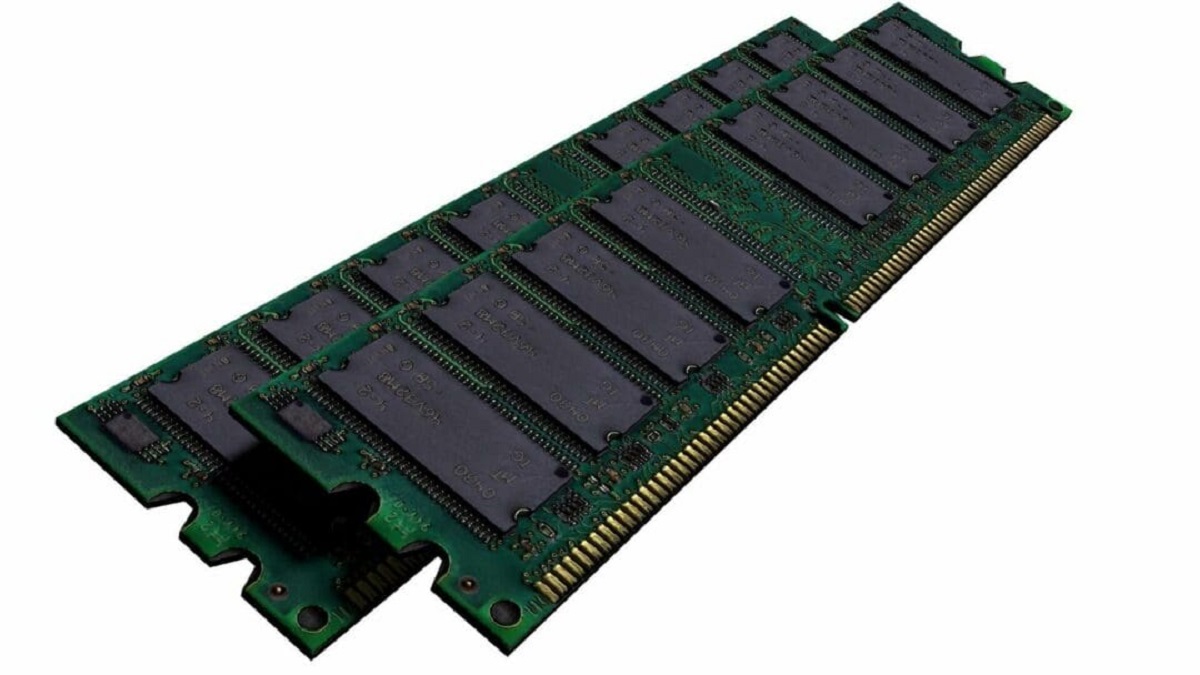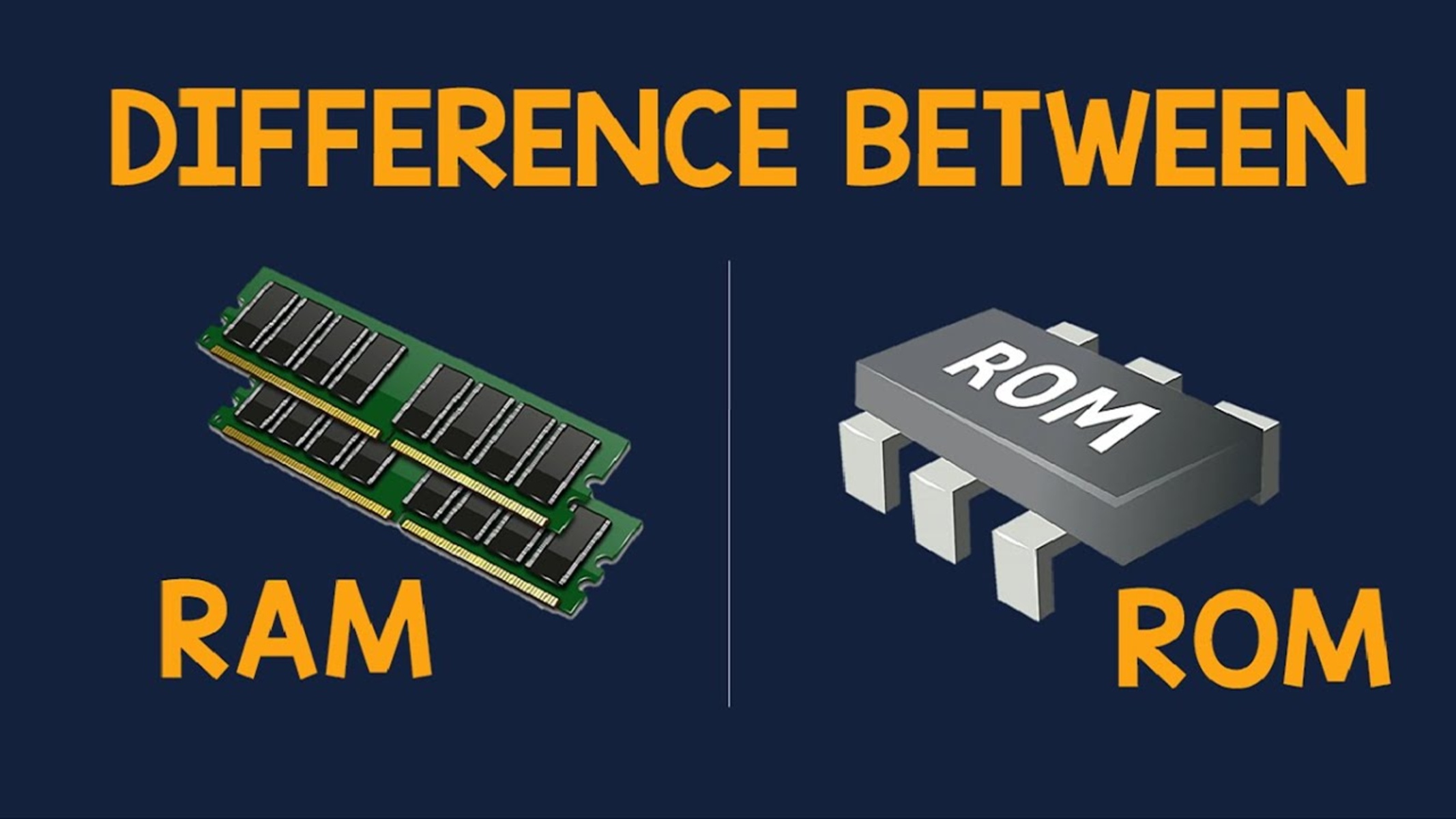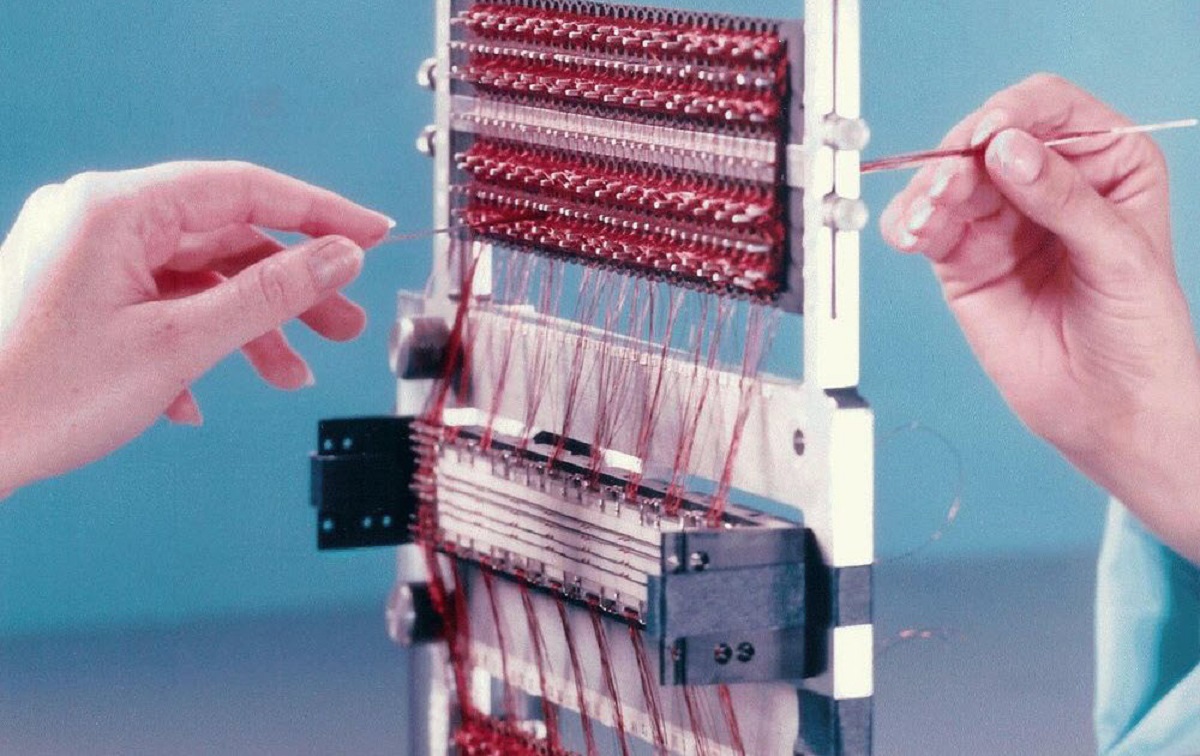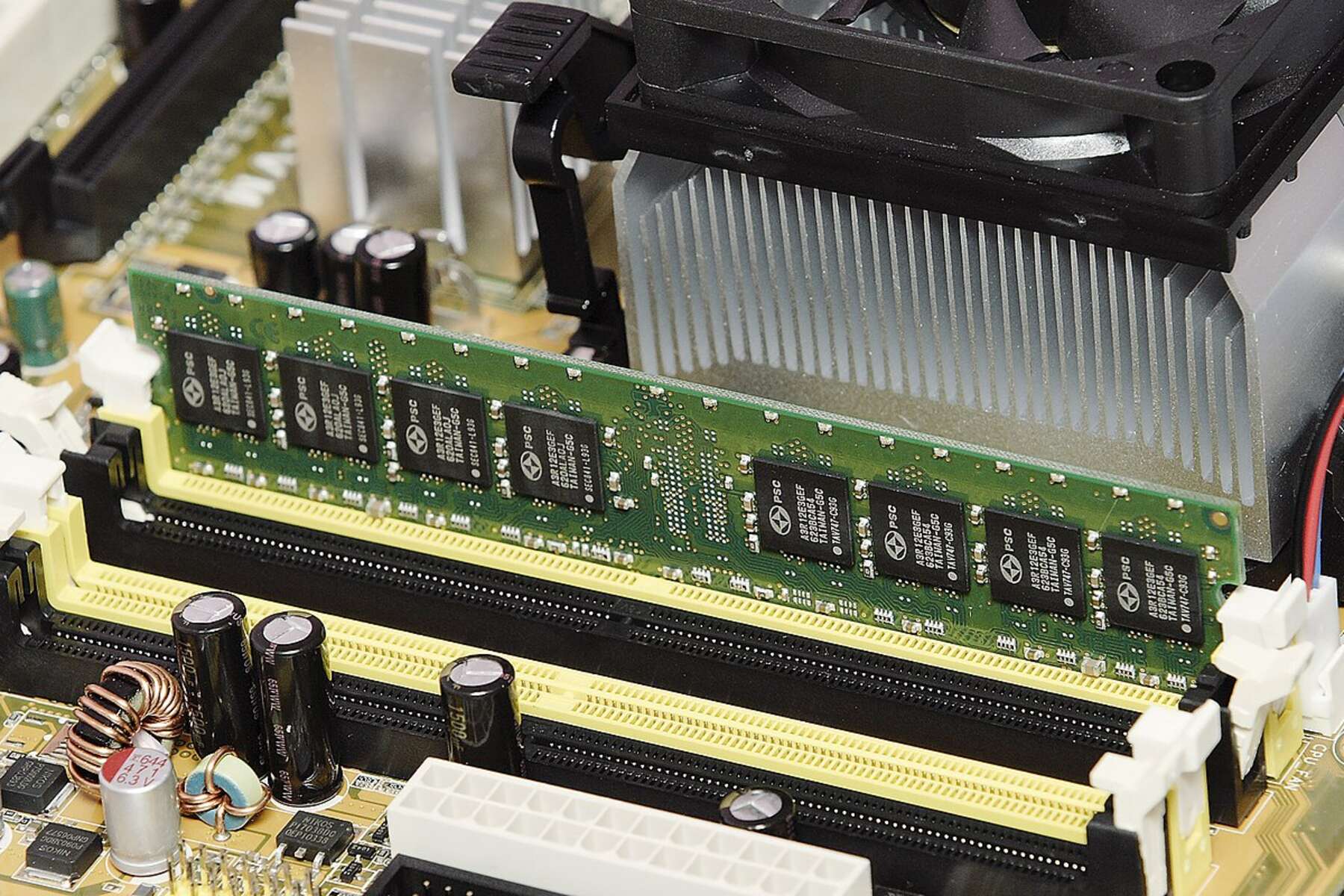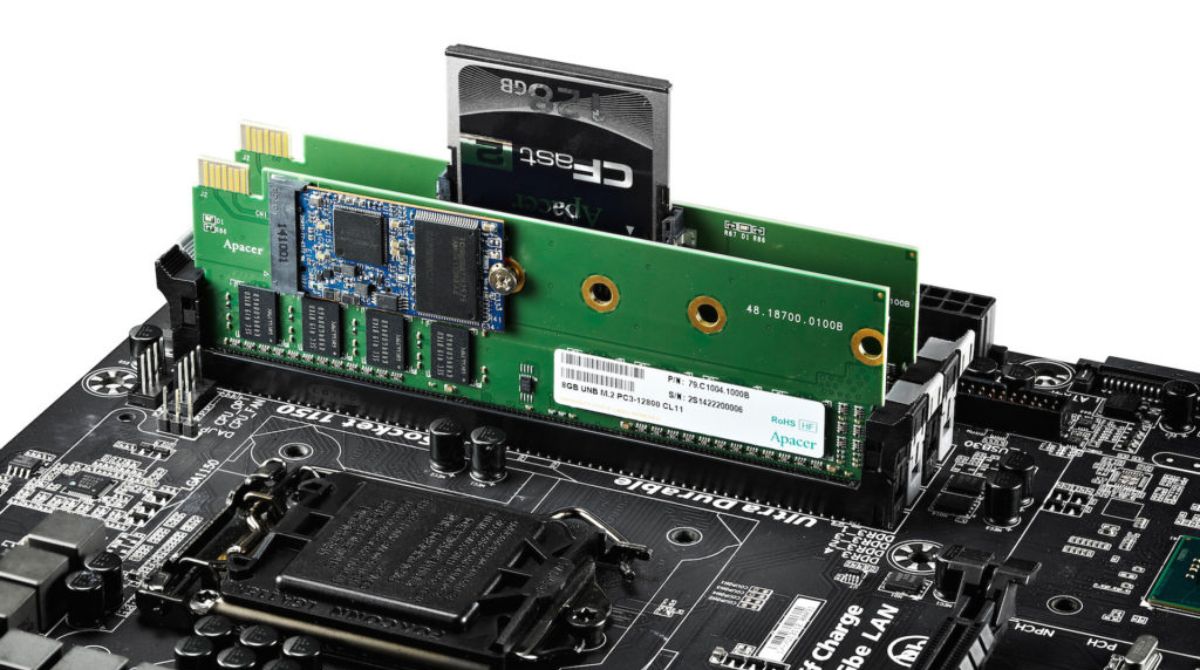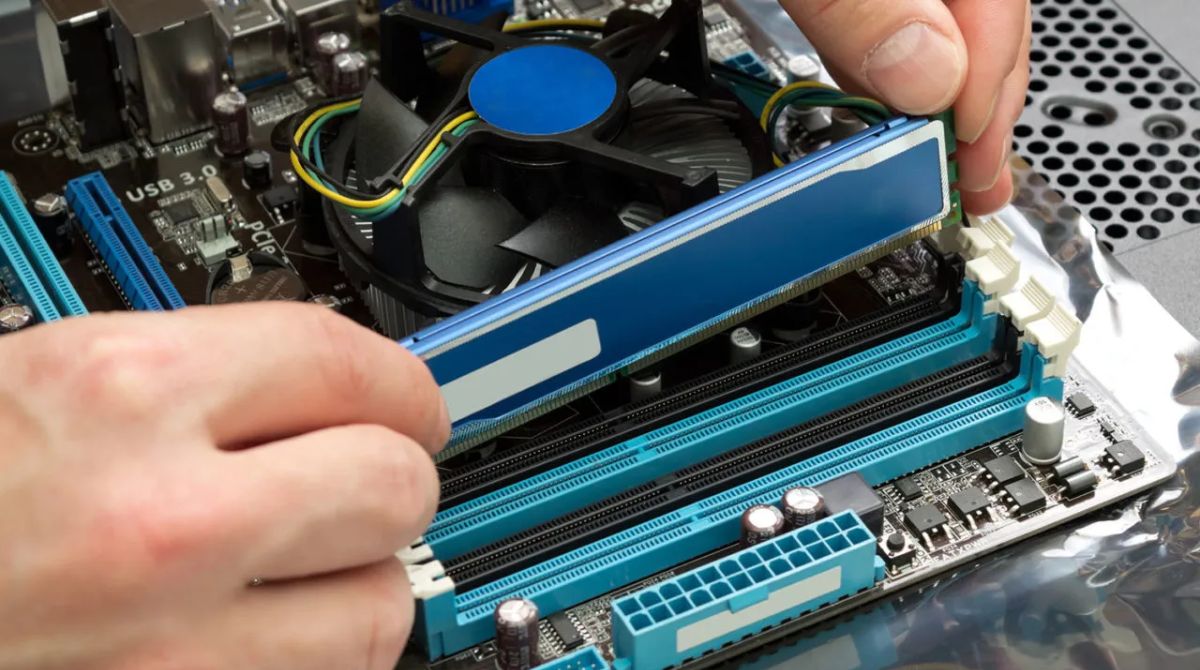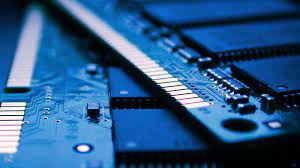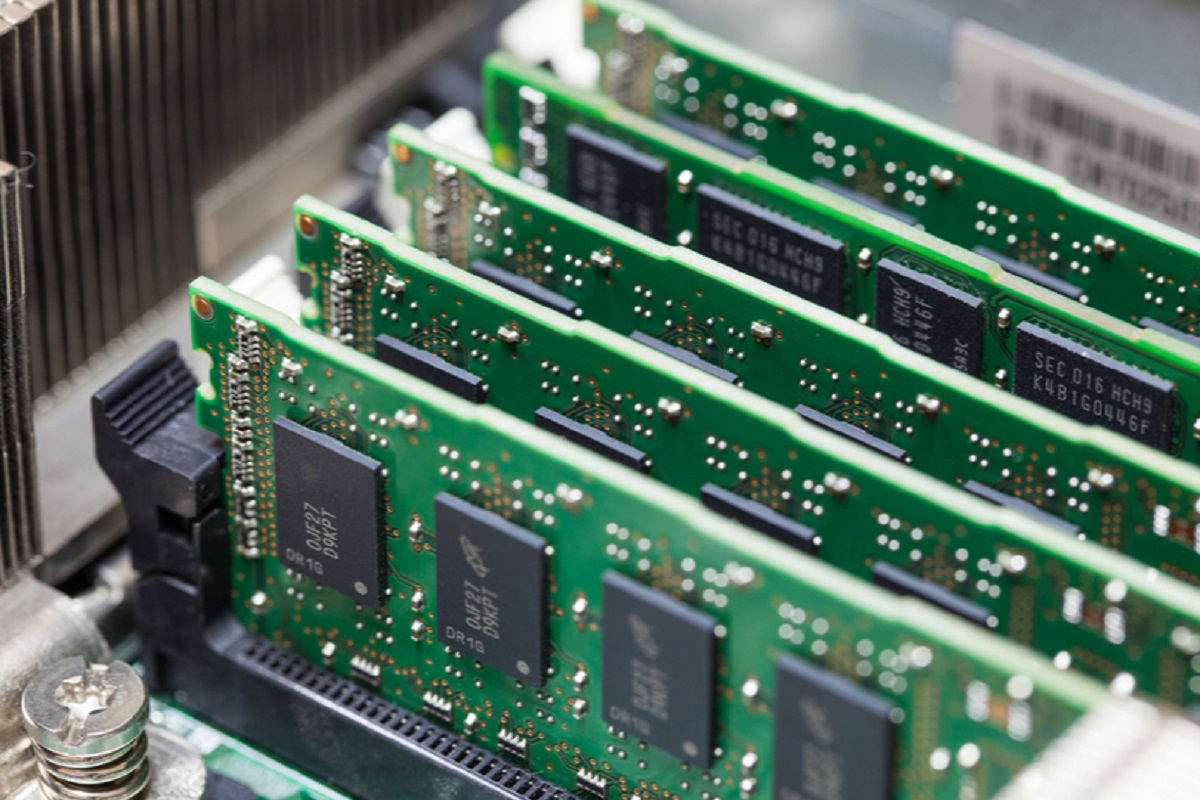Introduction
Welcome to the world of RAM timing! Whether you’re a computer enthusiast, a gamer, or simply someone curious about the technical aspects of computer hardware, understanding RAM timing is crucial. RAM timing refers to the set of parameters that govern how quickly data can be accessed and transferred within the random access memory (RAM) module of a computer.
RAM, or random access memory, sits at the heart of any computing device. It is responsible for temporarily storing data that the computer needs to access quickly. The speed and efficiency with which this data can be accessed and retrieved directly impacts system performance and responsiveness.
In this article, we’ll delve into the complexities of RAM timing and its impact on the overall performance of your computer. We’ll explore the different parameters that make up RAM timing and how they affect the speed and efficiency of data transfer. From CAS latency to command rate, we’ll demystify the technical jargon and provide you with practical insights to make informed decisions when choosing and optimizing your RAM modules.
Understanding RAM timing is not just for hardcore computer enthusiasts. Whether you’re a casual user or an avid gamer, knowing how RAM timing works can help you improve your system’s performance. By fine-tuning these parameters, you can achieve faster data transfers, reduce latency, and overall enhance the responsiveness of your computer.
So, buckle up and get ready to dive into the fascinating world of RAM timing. In the following sections, we’ll break down the different parameters and help you demystify the numbers associated with RAM timing specifications. By the end of this article, you’ll have a solid grasp on how RAM timing works and the steps you can take to optimize it for your specific needs.
What is RAM Timing?
RAM timing refers to the set of parameters that determine the speed at which data can be accessed and transferred within the random access memory (RAM) of a computer. It encompasses various factors that directly impact the efficiency and performance of the RAM module.
At its core, RAM timing controls the timing intervals between specific operations performed by the RAM module. These operations include the activation of a row, the selection of a specific column within that row, data reading or writing, and various other actions necessary for proper data storage and retrieval.
Each RAM stick has its own predefined timing structure, which is typically specified by the manufacturer. This timing structure determines the latency and efficiency of the RAM’s data transfer capabilities. RAM timing is measured in clock cycles, and the lower the number of cycles required for a specific operation, the faster and more efficient the RAM is considered to be.
RAM timing is often expressed using a series of numbers, such as 9-9-9-24. These numbers represent different timing parameters, which we will explore in more detail in the following sections. By understanding the significance of these parameters, you can better assess the performance and compatibility of RAM modules for your specific needs.
It’s important to note that RAM timing is just one aspect of overall RAM performance. Other factors, such as clock speed and module density, also influence the overall performance of the RAM module. However, RAM timing plays a crucial role in determining how quickly data can be accessed and transferred, making it an essential consideration when selecting or optimizing your RAM.
Now that we have a basic understanding of what RAM timing is, let’s dive deeper into the various parameters that make up RAM timing. In the next sections, we’ll explore the significance of CAS latency, command rate, RAS to CAS delay, RAS precharge time, and active to precharge delay. By the end, you’ll have a comprehensive understanding of how these parameters affect RAM performance and how to interpret RAM timing specifications effectively.
Why is RAM Timing Important?
RAM timing plays a critical role in the performance and responsiveness of your computer. The speed at which data can be accessed and transferred within the RAM modules directly impacts overall system performance. Here’s why RAM timing is so important:
1. Data Transfer Speed: RAM timing determines how quickly data can be accessed and transferred within the RAM module. It directly affects the latency, or delay, in retrieving data from the RAM. Lower RAM timing values indicate faster data transfer speeds, resulting in improved system performance and reduced loading times for applications and files.
2. System Responsiveness: Fast and efficient RAM timing ensures that your computer can quickly retrieve and process data. This leads to a smoother and more responsive user experience, especially when multitasking or running resource-intensive applications.
3. Gaming Performance: For gamers, RAM timing is particularly important. In games, fast and efficient data transfer is crucial for smooth gameplay, reduced input lag, and faster texture loading. Optimizing RAM timing can directly impact gaming performance, allowing for higher frame rates and a more immersive gaming experience.
4. Overclocking Potential: RAM timing parameters are essential when overclocking your RAM modules. Overclocking refers to running the RAM at higher frequencies than its default setting to achieve increased performance. Knowledge of RAM timing allows you to fine-tune these parameters to achieve stable and optimal overclocking results.
5. Compatibility: Different computer systems and motherboards have varying levels of support for specific RAM timing configurations. Understanding RAM timing specifications ensures that you select RAM modules compatible with your system. Mismatched RAM timing can lead to stability issues or loss of performance.
6. Futureproofing: RAM timing is an essential consideration for future upgrades. As technology advances, faster RAM modules with tighter timings become available. By understanding RAM timing, you can choose RAM modules with better performance potential, ensuring compatibility with future hardware and software advancements.
In summary, RAM timing directly affects the speed, responsiveness, and performance of your computer. Optimizing RAM timing can lead to smoother multitasking, improved gaming experiences, faster data transfers, and overall enhanced system performance. Whether you’re a casual user or a power user, being mindful of RAM timing is crucial for maximizing the capabilities of your computer system.
Understanding the Basics of RAM Timing
Before diving into the intricacies of RAM timing parameters, it’s important to establish a foundation of understanding about how RAM timing works. Let’s explore the basics of RAM timing:
1. Timing Intervals: RAM timing refers to the timing intervals between specific operations performed by the RAM module. These operations include activating a row, selecting a column, reading or writing data, and other essential tasks involved in data storage and retrieval.
2. Clock Cycles: RAM timing is measured in clock cycles, which represent the time it takes for one complete cycle of the system clock. Each specific RAM timing parameter is expressed in the number of clock cycles it takes to complete a particular operation.
3. Latency: Simplistically, RAM timing is synonymous with latency. It refers to the delay in accessing and transferring data within the RAM module. Lower RAM timing values indicate lower latency and faster data retrieval, resulting in improved system performance.
4. Timing Parameters: RAM timing includes various parameters that influence the speed and efficiency of data transfer. These parameters, such as CAS latency (CL), command rate (CR), RAS to CAS delay (tRCD), RAS precharge time (tRP), and active to precharge delay (tRAS), govern the specific timing intervals within the RAM module.
5. Interpretation: RAM timing is typically expressed as a set of numbers, such as 9-9-9-24. Each number represents a specific timing parameter. Understanding the meaning and significance of each parameter allows you to interpret and compare RAM modules effectively.
6. Manufacturing Variations: It’s important to note that RAM modules from different manufacturers or even within the same manufacturer can have variations in timing parameters. These variations can impact the overall performance and compatibility of the RAM modules, so it’s essential to consider them when selecting or optimizing your RAM.
Understanding the basics of RAM timing sets the groundwork for further exploration of each timing parameter and its impact on performance. In the following sections, we will delve deeper into each parameter, explaining their purpose, significance, and how they interact to determine the overall timing characteristics of your RAM module.
Now that we have a solid foundation, let’s explore each RAM timing parameter and discover how they influence the performance of your computer system.
RAM Timing Parameters
RAM timing is made up of several parameters that define the specific timing intervals within the RAM module. Understanding these parameters is essential for optimizing RAM performance. Let’s explore the key timing parameters:
1. CAS Latency (CL): CAS latency, often referred to simply as CL, is one of the most important RAM timing parameters. It represents the delay, in clock cycles, between the column address strobe signal (CAS) and the data being available for reading or writing. A lower CL value indicates faster data access and improved performance.
2. Command Rate (CR): The command rate determines the delay, in clock cycles, between commands issued to the RAM. It specifies how long the RAM module must wait after receiving a command before it can accept another command. Common command rate values are 1T and 2T, with 1T being faster and more efficient, but requiring more stable RAM modules and motherboard support.
3. RAS to CAS Delay (tRCD): RAS to CAS delay, sometimes written as tRCD, refers to the delay, in clock cycles, between the row address strobe signal (RAS) and the column address strobe signal (CAS). It represents the time it takes for the RAM module to access data within a specific row after the row has been activated.
4. RAS Precharge Time (tRP): RAS precharge time, also known as tRP, represents the delay, in clock cycles, between the precharge command and the activation of a new row. Precharging involves returning the memory cell capacitors to their original state before activating a new row. A shorter tRP value results in faster switching between rows and improved performance.
5. Active to Precharge Delay (tRAS): The active to precharge delay, or tRAS, determines the minimum time, in clock cycles, that a row must remain active before it can be precharged. This parameter affects the stability and performance of the RAM module. A shorter tRAS value allows for faster switching between rows but requires stable RAM and proper motherboard support.
These RAM timing parameters work together to define the timing characteristics of the RAM module, directly influencing data transfer speed, latency, and overall performance. It’s important to note that different RAM modules may have varying timing configurations, meaning that not all RAM modules will have the same parameter values.
In the next sections, we will delve deeper into each timing parameter, understanding their significance, and how they impact the performance of your computer system. By demystifying these timing parameters, you’ll gain the knowledge needed to make informed decisions when selecting or optimizing your RAM for optimal performance.
CAS Latency (CL)
CAS latency, often abbreviated as CL, is a critical RAM timing parameter that directly affects the performance and responsiveness of your computer system. It represents the delay, measured in clock cycles, between the moment a memory controller sends a column address strobe (CAS) signal and when the corresponding data becomes available for reading or writing.
A lower CAS latency indicates faster data access, resulting in improved system performance. CAS latency values typically range from CL2 to CL19, with the lower values indicating faster access times. However, it’s important to note that different RAM modules and systems may have different supported CAS latency values.
To better understand CAS latency, consider a scenario where the memory controller initiates a read command to retrieve data from a specific memory location. The CAS latency dictates how many clock cycles the memory module must wait before it can provide the requested data. A lower CAS latency means the data becomes available sooner, resulting in reduced delays and improved system performance.
Choosing the optimal CAS latency value for your RAM depends on various factors, including the system’s compatibility and the specific tasks you’ll be performing. While lower CAS latency values generally result in better performance, they can also increase the cost of the RAM module.
It’s important to note that the impact of CAS latency on overall system performance is often more noticeable in applications that demand frequent memory access, such as gaming or video editing. These tasks require a high level of data transfer and can greatly benefit from a lower CAS latency.
When selecting RAM modules or optimizing existing ones, it’s crucial to consider the supported CAS latency by your system’s memory controller. Mismatched CAS latency values can result in stability issues or poor performance. It’s recommended to consult your motherboard or system specifications to ensure compatibility when choosing or upgrading your RAM.
In summary, CAS latency is a vital RAM timing parameter that determines the delay between the initiation of a read or write command and the availability of the requested data. A lower CAS latency indicates faster data access and improved system performance. However, it’s essential to consider compatibility and task requirements when selecting the optimal CAS latency value for your RAM modules.
Command Rate (CR)
Command Rate (CR) is a significant RAM timing parameter that influences the efficiency and performance of your computer system. It refers to the delay, measured in clock cycles, between consecutive commands issued to the RAM module. CR determines how long the RAM module has to wait before it can accept another command after receiving one.
The time interval specified by the command rate is crucial as it allows the RAM module to complete the current command, stabilize its internal state, and prepare for the next command. Commonly, command rate values are represented as “1T” or “2T,” with “1T” denoting a faster command rate.
A command rate of 1T means that the RAM module only requires one clock cycle to execute a command and prepare for the next one. On the other hand, a command rate of 2T signifies a two-clock cycle delay before the module can accept a new command. It’s important to note that support for 1T command rate may vary among systems and motherboards, and some modules may default to a 2T command rate for compatibility purposes.
A lower command rate (1T) generally results in improved performance, as it allows for faster command execution and data transfer. However, using a 1T command rate may require better stability from the RAM modules and proper support from the motherboard. In cases where stability issues arise, switching to a 2T command rate can help resolve them.
When choosing or optimizing your RAM modules, it’s essential to consider both the supported command rate by your system’s motherboard and the stability of the RAM modules themselves. Mismatched command rates can result in system instability or suboptimal performance.
It’s worth noting that the impact of command rate on overall system performance may be more noticeable in memory-intensive tasks or applications that require frequent memory access, such as gaming or video editing. These tasks demand quick data retrieval, and a lower command rate can contribute to reducing latency and improving performance.
In summary, command rate is an important RAM timing parameter that determines the delay between consecutive commands issued to the RAM module. A lower command rate (1T) typically improves performance but requires stability and motherboard support. It’s crucial to consider compatibility and task requirements when selecting or optimizing your RAM modules, ensuring a balance between performance and stability.
RAS to CAS Delay (tRCD)
RAS to CAS Delay (tRCD) is an important RAM timing parameter that plays a crucial role in the data retrieval process. It represents the delay, measured in clock cycles, between the activation of a row address strobe (RAS) signal and the column address strobe (CAS) signal for accessing data within the activated row in the RAM module.
When data needs to be read or written from a specific row in the RAM module, the memory controller first activates the desired row by sending a RAS signal. Once the row is activated, it then sends a CAS signal to specify the column within that row from which data needs to be accessed. The tRCD parameter determines the time it takes for the RAM module to fulfill this process.
A lower tRCD value indicates a shorter delay between RAS and CAS signals, allowing for faster data access. Conversely, a higher tRCD value can result in increased latency. The tRCD parameter is typically expressed as a set of numbers, such as 9-9-9-24, where the third value represents the tRCD specification.
Optimizing the tRCD value depends on various factors including the specific RAM modules, motherboard compatibility, and the tasks being performed. Lower tRCD values generally lead to improved performance, especially in applications that frequently access memory, such as gaming or video editing.
When selecting or optimizing RAM modules, it is important to consider the supported tRCD values by your system’s motherboard. Mismatched tRCD values can lead to stability issues or suboptimal RAM performance. Reviewing the motherboard specifications or consulting with a hardware expert can help ensure compatibility and optimal performance.
It’s worth noting that while a lower tRCD value can improve performance, the overall impact on system performance may vary. In some cases, the difference between various tRCD values might not yield noticeable improvements, especially in tasks that are not heavily dependent on memory access.
In summary, RAS to CAS Delay (tRCD) is a RAM timing parameter that determines the delay between the activation of a RAS signal and the subsequent CAS signal. A lower tRCD value generally leads to faster data access and improved RAM performance. However, it’s crucial to consider compatibility and task requirements when selecting or optimizing your RAM modules to ensure optimal performance and stability.
RAS Precharge Time (tRP)
RAS Precharge Time (tRP) is a crucial RAM timing parameter that influences the efficiency and performance of data retrieval in your computer system’s RAM module. tRP represents the delay, measured in clock cycles, between the completion of a row address strobe (RAS) command and the precharging of the activated row in the RAM module.
After accessing data from a specific row in the RAM module, the memory controller sends a precharge command to reset and prepare the row for future access. The tRP value determines the time needed for the module to complete the precharge operation before the row can be activated again.
A lower tRP value indicates a shorter delay between the completion of a RAS command and the precharging of the activated row. This allows for faster switching between rows and improved RAM performance. Higher tRP values will result in delays, increasing the latency and potentially impacting system performance.
When choosing or optimizing RAM modules, it is important to consider the supported tRP values by your system’s motherboard. Mismatched tRP values can lead to stability issues or suboptimal RAM performance. Reviewing the motherboard specifications or consulting with a hardware expert can help ensure compatibility and optimal performance.
The impact of tRP on system performance can vary depending on the specific tasks being performed and the memory access patterns involved. In applications that require frequent memory access, such as gaming or video rendering, a lower tRP value can lead to noticeable improvements in performance. However, for general computing tasks, the impact of tRP may be less significant.
It’s important to note that tRP is just one aspect of overall RAM performance. Consideration should also be given to other timing parameters, such as CAS latency and RAS to CAS Delay, as they all work together to define the overall timing characteristics of the RAM module.
In summary, RAS Precharge Time (tRP) is a RAM timing parameter that determines the delay between the completion of a RAS command and the precharging of the activated row in the RAM module. A lower tRP value can result in faster switching between rows and improved RAM performance. However, it’s crucial to consider compatibility and task requirements when selecting or optimizing your RAM modules to ensure optimal performance and stability.
Active to Precharge Delay (tRAS)
Active to Precharge Delay (tRAS) is a critical RAM timing parameter that influences the performance and responsiveness of your computer’s random access memory (RAM) module. It represents the minimum time, measured in clock cycles, that a row in the RAM module must remain active before it can be precharged.
When data needs to be accessed from a specific row, the memory controller activates that row by sending a row address strobe (RAS) signal. The tRAS value determines how long the row must remain active before it can be precharged, or reset for the next access. A shorter tRAS value allows for faster switching between rows, leading to improved RAM performance.
The specific tRAS value is specified by the RAM module manufacturer and is typically expressed as part of a set of timing numbers, such as 9-9-9-24, where the fourth value represents tRAS.
Choosing an optimal tRAS value depends on several factors, including the specific RAM modules and motherboard compatibility. Lower tRAS values generally result in better performance, especially in memory-intensive tasks that involve frequent switching between rows.
It’s important to note that selecting an overly aggressive, low tRAS value may deteriorate stability, particularly with higher memory frequencies or when the RAM modules or motherboard do not fully support the chosen value. Adjustments may need to be made to find a balance between performance gains and system stability.
When choosing or optimizing RAM modules, it’s crucial to ensure that the tRAS value is supported by your system’s motherboard. Mismatched tRAS values can lead to stability issues or reduced RAM performance. Checking the motherboard specifications or consulting with a hardware expert can help verify compatibility and ensure optimal performance.
The impact of tRAS on system performance varies depending on the specific tasks being performed, the memory access patterns, and the role of the RAM in those tasks. Applications that frequently access memory, such as gaming or video editing, may benefit more noticeably from a lower tRAS value. However, for general computing tasks, the impact of tRAS on performance may be less pronounced.
In summary, Active to Precharge Delay (tRAS) is a RAM timing parameter that determines the minimum time a row must remain active before it can be precharged. A lower tRAS value allows for faster switching between rows and improved RAM performance. However, it’s important to consider compatibility and stability when selecting or optimizing your RAM to strike a balance between performance gains and system stability.
Making Sense of RAM Timing Specifications
Understanding RAM timing specifications is crucial when selecting and optimizing your RAM modules. The RAM timing specifications are typically represented as a series of numbers, such as 9-9-9-24, referring to the various timing parameters we have discussed. Here’s a guide to help make sense of RAM timing specifications:
CAS Latency (CL): The first number in the RAM timing specification represents the CAS latency or CL. It indicates the delay, in clock cycles, between the CAS signal and the availability of data. Lower CL values indicate faster data access and improved performance. For example, a RAM timing specification of 9-9-9-24 means a CAS latency of 9.
Command Rate (CR): The second number is the command rate or CR. It denotes the delay, in clock cycles, between consecutive commands issued to the RAM module. A smaller command rate, such as 1T, indicates faster command execution and improved performance.
RAS to CAS Delay (tRCD): The third number is the RAS to CAS delay or tRCD. It represents the delay, in clock cycles, between the RAS and CAS signals. A lower tRCD value indicates faster data access within activated rows.
RAS Precharge Time (tRP): The fourth number is the RAS precharge time or tRP, which signifies the delay, in clock cycles, between the completion of a RAS command and the precharging of the activated row in the RAM module.
Active to Precharge Delay (tRAS): The final number is the active to precharge delay or tRAS. It represents the minimum time, in clock cycles, that a row must remain active before it can be precharged. Lower tRAS values facilitate faster switching between rows and can improve RAM performance.
When comparing and selecting RAM modules, it’s important to consider these timing parameters. A lower value for each parameter generally indicates better performance, but it’s essential to ensure compatibility with your system. Some systems and motherboards may have limitations on supported timing specifications, so it’s crucial to check the documentation or specifications of your motherboard to ensure proper compatibility. Additionally, factors such as memory overclocking and stability should also be taken into account when optimizing RAM timing specifications.
By understanding the significance of each timing parameter and considering compatibility factors, you can make informed decisions when selecting and optimizing your RAM modules. Balanced RAM timing specifications can contribute to improved system performance, responsiveness, and efficiency.
How to Interpret RAM Timing Numbers
Interpreting RAM timing numbers is essential for understanding the performance capabilities of your RAM modules. RAM timing numbers, typically presented as a series of values separated by hyphens, such as 9-9-9-24, represent specific timing parameters that impact data access and transfer speeds. Here’s a guide on how to interpret RAM timing numbers:
CAS Latency (CL): The first number in the RAM timing sequence represents the CAS latency or CL. It indicates the delay, in clock cycles, between the time the RAM receives a command to read or write data (CAS signal) and the moment the data becomes available. Lower CL values, such as 9, indicate faster data access and improved performance.
Command Rate (CR): The second number in the sequence is the command rate or CR. It defines the time delay, in clock cycles, between consecutive commands sent to the RAM. Common values are 1T and 2T. A command rate of 1T means the RAM can process commands more rapidly, resulting in improved performance compared to a command rate of 2T.
RAS to CAS Delay (tRCD): The third number represents the RAS to CAS delay or tRCD. It determines the delay, in clock cycles, between the row address strobe (RAS) signal and a column address strobe (CAS) signal when accessing data within an activated row. A lower tRCD value, such as 9, indicates faster data access time within activated rows.
RAS Precharge Time (tRP): The fourth number denotes the RAS precharge time or tRP. It represents the time delay, in clock cycles, between the completion of a RAS command and the precharging of the activated row in the RAM module. A lower tRP value allows for quicker resetting of the row, enabling faster switching between rows.
Active to Precharge Delay (tRAS): The final number is the active to precharge delay or tRAS. It signifies the minimum time, in clock cycles, a row must remain active before it can be precharged. A lower tRAS value enables faster switching between rows, contributing to improved RAM performance.
Interpreting RAM timing numbers involves considering the performance implications of each timing parameter and how they contribute to overall system performance. For optimal performance, it’s important to strike a balance between low timing values and compatibility with your system’s motherboard and RAM modules. Additionally, evaluating the specific tasks and applications you’ll be using can help determine the ideal RAM timing numbers for your needs.
When comparing RAM modules, look for lower timing values across all parameters to ensure faster data access and improved performance. However, always consider compatibility and stability, as some systems may have specific limitations on supported timing values. Consulting your motherboard documentation and seeking advice from hardware experts can help ensure proper interpretation and selection of RAM timing numbers.
By understanding how to interpret RAM timing numbers, you can make well-informed decisions when selecting and configuring your RAM, resulting in optimized system performance and responsiveness.
The Impact of RAM Timing on Performance
RAM timing has a significant impact on the overall performance and responsiveness of your computer system. The timing parameters, such as CAS latency, command rate, RAS to CAS delay, RAS precharge time, and active to precharge delay, directly affect data access and transfer speeds within the random access memory (RAM) module. Here’s a look at how RAM timing influences performance:
Data Transfer Speed: RAM timing determines how quickly data can be accessed and transferred within the RAM module. Parameters like CAS latency and RAS to CAS delay impact the time it takes to read or write data. Lower timing values lead to faster data transfer speeds, resulting in improved system performance and reduced loading times for applications and files.
System Responsiveness: Fast and efficient RAM timing ensures quick retrieval and processing of data. This leads to a more responsive and smoother user experience, particularly when multitasking or running resource-intensive applications. With optimal RAM timing, your system can handle multiple tasks simultaneously, reducing lags and providing a seamless computing experience.
Gaming Performance: RAM timing is especially important for gamers. In gaming, RAM speed directly impacts the rendering and loading of game assets, resulting in improved frame rates and reduced input latency. Faster RAM timing allows for quicker data access and transfer, enhancing gaming performance and delivering a more immersive gaming experience.
Application Performance: RAM timing has a significant impact on memory-intensive applications such as multimedia editing software or virtual machines. These applications rely heavily on accessing and manipulating large amounts of data in memory. With lower RAM timing values, the delay in data access is reduced, resulting in faster processing and improved performance in these applications.
Overclocking Potential: RAM timing parameters play a crucial role when overclocking the RAM modules. Overclocking involves running the RAM at higher frequencies than their default settings, potentially increasing performance. Understanding and optimizing RAM timing helps fine-tune the overclocking process, ensuring stable and optimal performance gains.
Optimizing RAM timing can yield noticeable improvements in system performance. However, it’s important to note that RAM timing is just one aspect of overall system performance. Factors such as CPU performance, storage speed, and graphics processing also affect the overall computing experience. Striking a balance between all these components is crucial for achieving optimal performance.
When selecting or upgrading RAM modules, consider the compatibility of the timing specifications with your system’s motherboard and CPU. Reviewing the documentation or consulting with a hardware expert can provide insights into the supported RAM timing values and potential performance gains. Additionally, monitoring system stability during any adjustments to RAM timing is essential to avoid issues.
In summary, RAM timing significantly affects system performance, data transfer speeds, and multitasking capabilities. By understanding and optimizing RAM timing parameters, you can enhance overall system responsiveness, enjoy smoother gaming experiences, and improve performance in memory-intensive applications.
Tips for Optimizing RAM Timing
Optimizing RAM timing can result in improved system performance and responsiveness. Here are some tips to help you achieve the best possible RAM timing:
1. Choose RAM with Lower Timing Specifications: When selecting RAM modules, opt for those with lower timing specifications. Look for lower CAS latency (CL) and other timing values to ensure faster data access and transfer speeds.
2. Consider Higher Frequency RAM: RAM modules with higher frequencies often have tighter timing specifications. Consider choosing RAM with higher frequencies if your system supports it, as this can lead to improved performance.
3. Check Motherboard Compatibility: Before purchasing new RAM modules, check your motherboard’s compatibility and supported RAM timing specifications. Ensure that the selected RAM modules are supported by your motherboard for optimal functioning.
4. Enable XMP/DOCP Profile: Most modern motherboards have XMP (Extreme Memory Profile) or DOCP (Direct Overclock Profile) options in the BIOS. Enabling XMP/DOCP can automatically set the optimal RAM timing values for your specific RAM modules, ensuring stability and performance.
5. Manually Adjust Timing Values: If you have experience with manual tweaking, you can manually adjust the RAM timing values in the BIOS. Be cautious when doing this, as incorrect settings can lead to instability. Gradually adjust one parameter at a time, testing system stability after each change.
6. Keep the System Cool: Excessive heat can affect RAM stability and performance. Ensure that your system remains cool by maintaining proper airflow, using high-quality cooling solutions, and avoiding overclocking beyond safe limits.
7. Update BIOS and RAM Firmware: Keeping your motherboard’s BIOS and RAM firmware up to date can improve stability and introduce performance enhancements, including optimized RAM timing support.
8. Perform System Stress Testing: After making changes to RAM timing settings, stress test your system using benchmarking tools or memory testing software. This helps identify any stability issues that may arise due to the revised timings.
9. Use Reliable RAM Modules: Investing in high-quality and reputable RAM modules improves the chances of achieving stable and optimal RAM timing. Trusted manufacturers often provide better support and compatibility.
10. Seek Expert Advice: If you are unsure about optimizing RAM timing or encounter difficulties, consult with hardware experts, community forums, or online resources for guidance. Experienced individuals can provide insights, useful troubleshooting tips, and recommendations specific to your hardware configuration.
Remember, not all systems and RAM modules allow for extensive timing adjustments, and certain optimizations may be limited by hardware compatibility. It’s important to strike a balance between performance gains and system stability, ensuring that your computer remains reliable and functional.
By following these tips and considering the unique characteristics of your system, you can optimize your RAM timing to maximize performance and achieve a smoother computing experience.
Conclusion
RAM timing plays a crucial role in the performance and responsiveness of your computer system. Understanding and optimizing RAM timing parameters, such as CAS latency, command rate, RAS to CAS delay, RAS precharge time, and active to precharge delay, can result in improved data access and transfer speeds, leading to better system performance.
When interpreting RAM timing numbers, consider the impact of each parameter on data retrieval and system latency. Lower timing values generally indicate faster access and improved performance. However, compatibility with your system’s motherboard and RAM modules should be taken into account to ensure stability and proper functioning.
Optimizing RAM timing can be achieved through various methods, including selecting RAM modules with lower timing specifications, considering higher frequency RAM, enabling XMP/DOCP profiles, manually adjusting timing values (with caution), keeping the system cool, updating firmware, performing system stress testing, and seeking expert advice when needed.
Remember that RAM timing is just one aspect of overall system performance. Other factors, such as CPU performance, storage speed, and graphics processing, also influence the overall computing experience. It’s important to strike a balance between all these components for optimal performance.
By understanding and optimizing RAM timing, you can enhance system responsiveness, gaming performance, and the overall efficiency of memory-intensive tasks. Selecting compatible RAM modules and fine-tuning timing parameters can contribute to an improved computing experience, making your system more capable of handling demanding applications and providing a smoother multitasking experience.
Take the time to research and understand the specifics of your hardware configuration, consult with experts when needed, and perform adequate testing to ensure stability and compatibility. By optimizing RAM timing, you can unlock the full potential of your computer’s memory and enjoy a faster, more responsive system.







